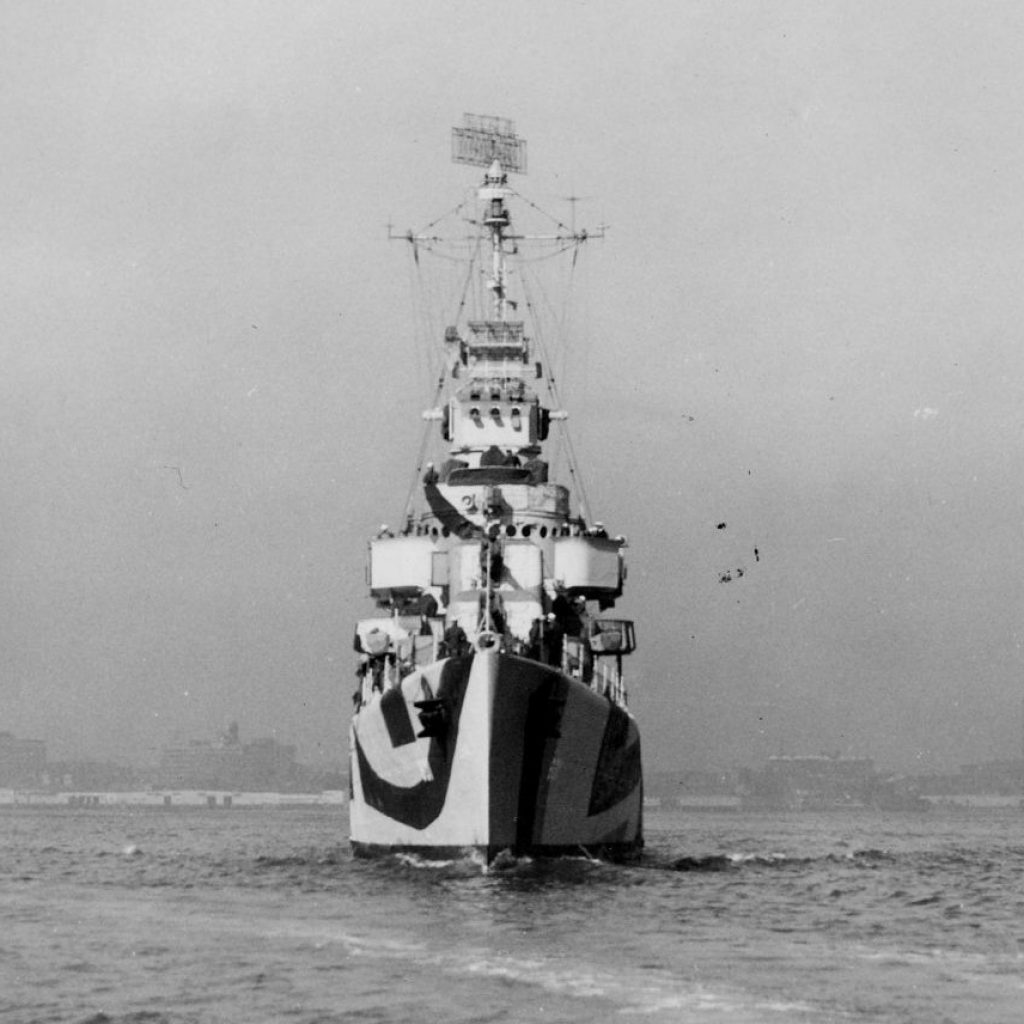
 While undergoing refresher training in Casco Bay, Maine, in March 1944, Champlin was ordered out on a submarine hunt, joining an all-day operation on April 7th, 1944. On just their third day of submarine patrol, the Champlin makes contact with U-boat U-856, and spends nearly the entire day trying to destroy it, making and losing contact with the U-boat nearly ten times. The exhausting battle came to a head at 16:52 when the U-boat’s periscope was spotted just off the Champlin’s port beam. Seven minutes later, the Champlin scored a direct hit on U-856, causing the boat to start on fire. Sensing his chance to destroy the U-boat for good, the Champlin’s Captain, Commander John J. Shaffer, ordered the Champlin to directly ram the U-boat. Moments after ramming U-856, the Champlin circled around to continue her attack, but one of her 20mm projectile’s misfired on the bridge, causing a large explosion. The explosion wounded four men, including Commander Shaffer. Shaffer was taken to the Emergency Cabin immediately, and would undergo an operation early the next morning in an effort to save his life, but he would succumb to his wounds just hours later.
While undergoing refresher training in Casco Bay, Maine, in March 1944, Champlin was ordered out on a submarine hunt, joining an all-day operation on April 7th, 1944. On just their third day of submarine patrol, the Champlin makes contact with U-boat U-856, and spends nearly the entire day trying to destroy it, making and losing contact with the U-boat nearly ten times. The exhausting battle came to a head at 16:52 when the U-boat’s periscope was spotted just off the Champlin’s port beam. Seven minutes later, the Champlin scored a direct hit on U-856, causing the boat to start on fire. Sensing his chance to destroy the U-boat for good, the Champlin’s Captain, Commander John J. Shaffer, ordered the Champlin to directly ram the U-boat. Moments after ramming U-856, the Champlin circled around to continue her attack, but one of her 20mm projectile’s misfired on the bridge, causing a large explosion. The explosion wounded four men, including Commander Shaffer. Shaffer was taken to the Emergency Cabin immediately, and would undergo an operation early the next morning in an effort to save his life, but he would succumb to his wounds just hours later.